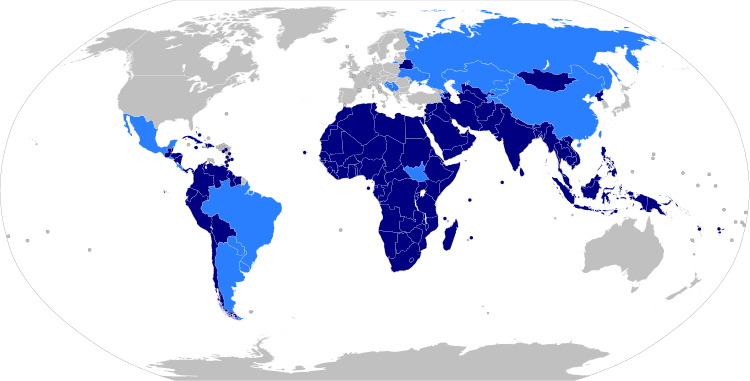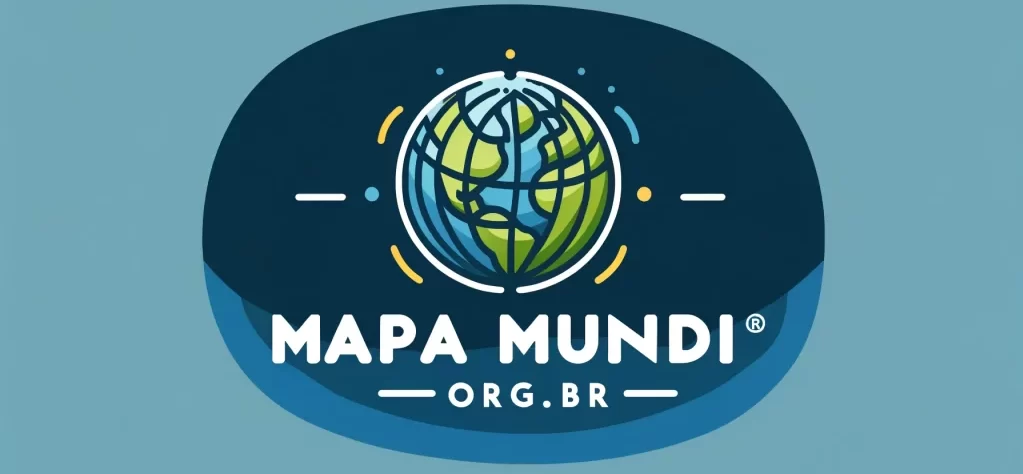
Durante a Guerra Fria o mundo foi estruturado em torno de dois grandes blocos: capitalista (liderado pelos Estados Unidos) e comunista (liderado pela União Soviética). Esses blocos formaram uma estrutura internacional conhecida por bipolar, na medida em que os blocos se mostravam antagônicos.
Ao longo da Guerra Fria outras tendências importantes ocorreram, especialmente as lutas nacionais por independência, combate ao imperialismo e a busca por superação da pobreza em grande parte do mundo. Essas tendências acabaram por consolidar um grupo conhecido por Movimento dos Países Não Alinhados.
Importante notar que não se tratou da criação de um terceiro polo e nem necessariamente da recusa da existência dos dois polos existentes. O objetivo era estimular agendas que não estavam encaminhadas na bipolaridade predominante, como era o caso do combate à pobreza. Em seus membros coexistiam países que faziam parte tanto do lado capitalista (como o Brasil) quanto do lado comunista (como a Iugoslávia). Mais do que propor uma nova ordem mundial rompendo com o confronto Leste-Oeste, buscava colocar uma agenda mais ampla, chamada Norte-Sul.
O fim da Guerra Fria (1989) levou a um repensar de toda a estrutura internacional. Muito se fala do fim da bipolaridade e da construção de uma nova ordem internacional. Na década de 1990 o mundo iniciava uma nova fase de cooperação mais aberta, com várias agendas sendo incorporadas nos debates mundiais (meio ambiente, gênero, habitação…). Com isso, o Movimento dos Países Não Alinhados (MNOAL) perdeu relevância como um espaço de promoção de agendas, já que estas foram assumidas globalmente.
No início dos anos 2000 já ficava claro que a estrutura bipolar havia acabado, porém, isso não significou que as agendas então destacadas na década anterior teriam o espaço que almejavam os países do Sul. Movimentos de protecionismo e imposição de regras e padrões internacionais acabaram mostrando que algumas destas agendas foram instrumentalizadas para a construção de uma ordem internacional que manteria a desigualdade, ainda que mais aberta do que durante Guerra Fria.
Hoje, quando olhamos para a maior parte da África ou para importantes pedaços da América Latina e da Ásia percebemos que as desigualdades internacionais permanecem. Questões ligadas à pobreza, ao meio ambiente, aos direitos humanos continuam tão irresolvidas quanto estiveram nos anos da Guerra Fria. Basicamente o que se vê é um “fechar dos olhos” para muitas questões em vários lugares do mundo.
Anos de protecionismo, imposições de regras unilateralmente concebidas ou mesmo o ignorar de vastas regiões do mundo levaram ao ressurgimento da necessidade do encaminhamento de agendas em âmbitos não globais. É nesse contexto que (re)surgem blocos, movimentos e agrupamentos de países buscando colocar suas agendas a partir de suas perspectivas.
Em função do tamanho (geográfico e econômico) de seus membros, o mais famoso desses agrupamentos na atualidade é o BRICS (formado por Brasil, Rússia, Índia, China, e África do Sul). No entanto, um grupo que continua a existir e tem um papel cada vez mais importante a desempenhar é justamente o Movimento dos Países Não Alinhados. Englobando majoritariamente países do hemisfério sul.
Para que se tenha uma ideia, aproximadamente 80% da população mundial mora no hemisfério sul. Os desafios que esses países enfrentam são muito grandes, sendo incompreensível que o “mundo” tenha chegado a níveis de desenvolvimento econômico, de segurança interna, qualidade de saúde, moradia… enquanto a maior parcela dos seres humanos não tem acesso a todas essas conquistas.
O Movimento dos Países Não Alinhados poderia ser o principal espaço para que essas agendas sejam colocadas a partir de quem efetivamente as vive. É importante entendermos os desafios a parti de quem os enfrenta e não a partir de países que têm respostas que buscam impor. Não espero que os Não Alinhados consigam enfrentar seus desafios sozinhos, mas devem ser os responsáveis por fazer com que as agendas novamente ganhem o centro da discussão global, como ocorreu na década de 1990.
Novamente, não se trata de criar um grupo para combater outro. O mundo hoje está integrado de tal forma que estamos todos no mesmo barco. Mais do que combater, o momento é o de afirmar agendas a partir de suas próprias dinâmicas.
Pós-Doutor em Competitividade Territorial e Indústrias Criativas, pelo Dinâmia – Centro de Estudos da Mudança Socioeconómica, do Instituto Superior de Ciencias do Trabalho e da Empresa (ISCTE, Lisboa, Portugal). Doutor em Relações Internacionais pela Universidade de Brasília (2007). É Diretor Executivo do Mapa Mundi. ORCID https://orcid.org/0000-0003-1484-395X
